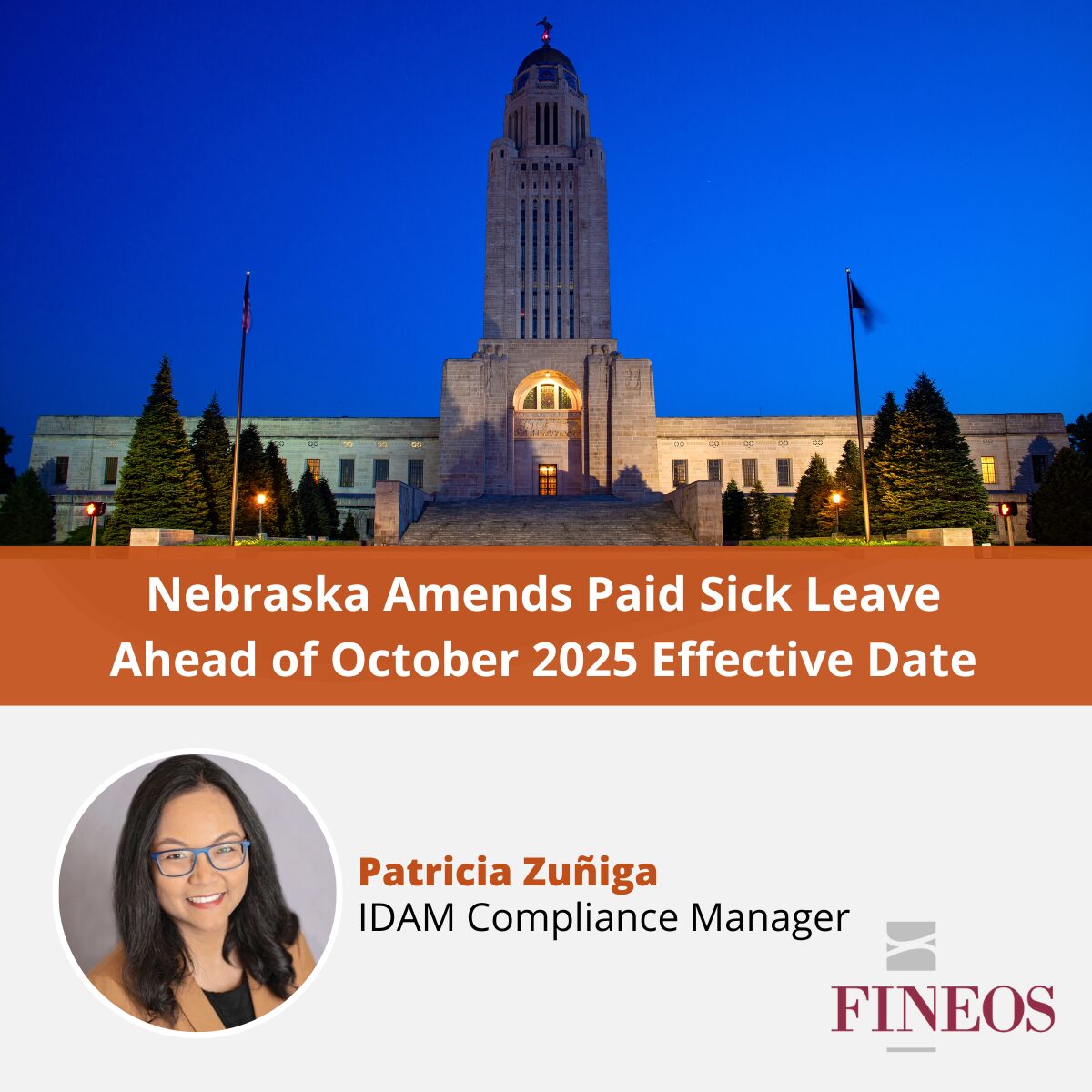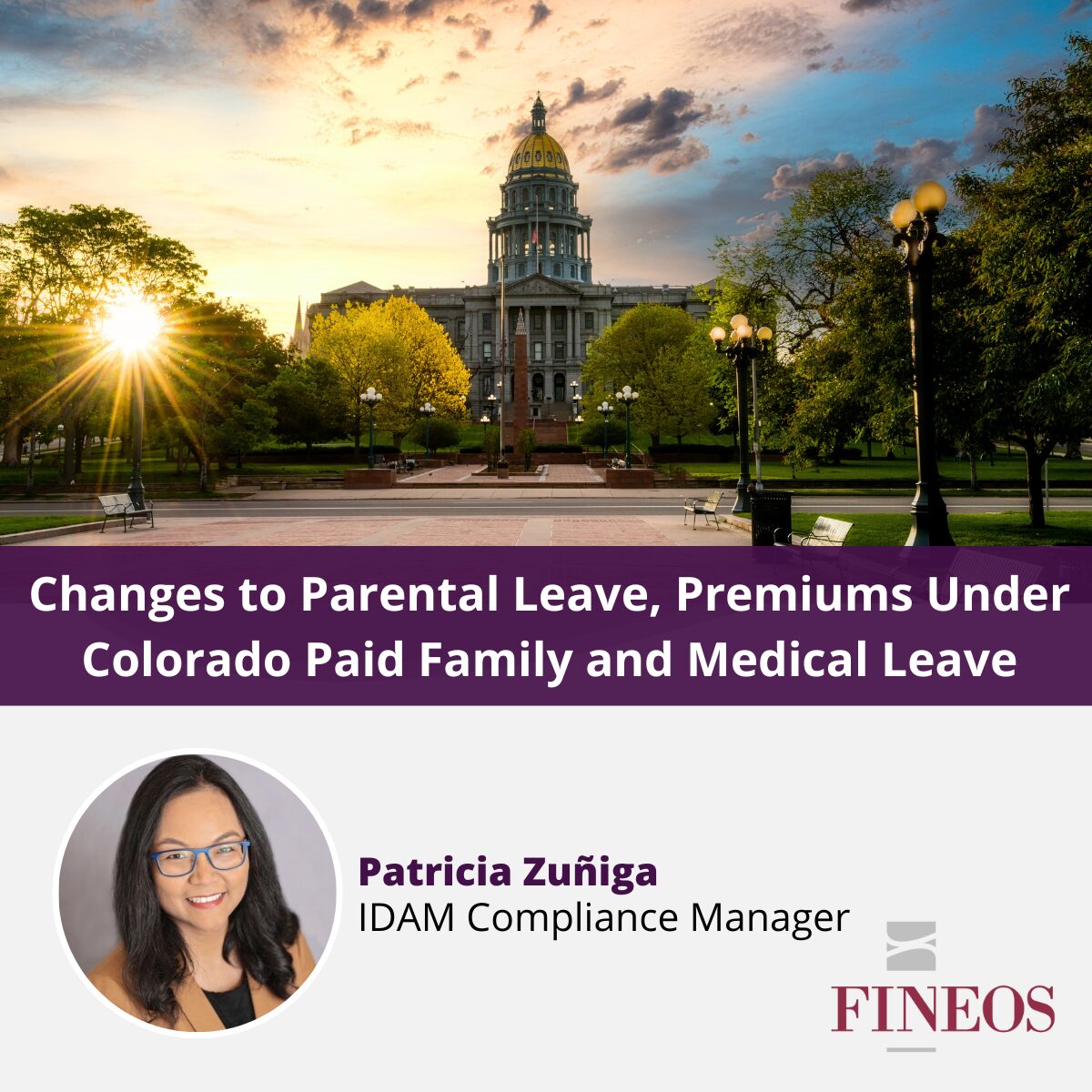During the early hours of March 14, 2020, the U.S. House of Representatives passed H.R. 6201, named the Families First Coronavirus Response Act (“FFCRA”). The FFCRA includes within the bill the Emergency Family and Medical Leave Expansion Act and the Emergency Paid Sick Leave Act, which would be effective 15 days after the President’s signature and sunset on December 31, 2020. This bill awaits a vote from the Senate. The President supports the bill, so chances of it becoming law are high.
FFCRA includes many emergency measures beyond paid leave. However, the sections that impact FINEOS, its clients, and the absence and claims industry most are the Emergency Family and Medical Leave Expansion Act of 2020 and the Emergency Paid Sick Leave Act. The legislation was quickly drafted and amended yesterday and during the early hours this morning, so there are parts that require clarification. In today’s press conference, Secretary Mnuchin mentioned a technical correction to revise the bill’s language on Monday, March 16th, so amendments are likely, in addition to regulatory guidance.
While there are many changes detailed below, the key takeaway is that employees who work for employers with fewer than 500 employees are entitled to fully paid leave for the first 14 days of a COVID-19 qualifying reason, and 2/3 pay for the remainder of the leave, up to 12 weeks. Employers can take 100% of the amounts paid to employees as a refundable tax credit against the employer portion of Social Security taxes. Read on for the details of the bill:
FMLA Amendment – Emergency Family and Medical Leave Expansion Act
This section of the FFCRA amends the federal Family and Medical Leave Act (FMLA) as follows:
- Adds an FMLA-qualifying leave reason of “qualifying need because of a public health emergency,” which would include the COVID-19 pandemic; this leave reason sunsets on December 31, 2020, and covers leave to:
-
- self-quarantine because a health care provider or public official recommended or ordered that the employee’s physical presence at work would jeopardize the health of others due to exposure or symptoms of COVID-19
- care for a family member who is under a COVID-19 quarantine
- care for a minor son or daughter if the school or childcare has been closed, or the child care provider of such son or daughter is unavailable, due to COVID-19
- Leave under this new public health emergency leave reason, as described above, would be an unpaid leave under the FMLA during the first 14 days, but paid leave per the Emergency Paid Sick Leave Act, described below. The remainder of leave for this leave reason beyond the 14-day period must be paid by the employer
- The amount of paid leave must be not less than 2/3 of the employee’s regular rate of pay for the number of hours the employee would have been normally scheduled
- For the purpose of leave under this new COVID-19 leave reason:
-
- amends the definition of employee to anyone who has been employed by an employer for at least 30 days; currently, under the existing FMLA provisions, you must have been employed for at least 12 months for coverage
- applies only to employers with fewer than 500 employees, which will include small employers not currently covered by the FMLA
- expands the definition of family member to include:
-
-
- an adult child, next of kin, grandchild and grandparent, if the individual is pregnant, a senior citizen, or an individual with a disability, or with access or functional needs
- foster and adoptive parents, stepparents, parents of a domestic partner, parent-in-laws, and guardians
-
-
- requires job restoration following any such leave if the employer has 25 or more employees
New Short-Term Paid Sick Leave Law: Emergency Paid Sick Leave Act
This bill also requires employers with fewer than 500 employees to immediately provide 80 hours of paid sick leave for full-time employees, or a 2-week pay average for part-time employees, to:
- self-isolate because the employee is diagnosed with COVID-19
- obtain a medical diagnosis or care if the employee is experiencing the symptoms of COVID-19
- comply with a public official or a health care provider order or recommendation that the physical presence of the employee on the job would jeopardize the health of others due to COVID-19 exposure
- care for the employee’s family member who is self-isolating because the family member has been diagnosed with or is experiencing symptoms of COVID-19 and/or needs to obtain medical diagnosis or care
- care for a family member if a public official or a health care provider determines that the presence of the family member in the community would jeopardize the health of others due to COVID-19 exposure
- care for the child of such employee if the school or child care has been closed due to COVID-19
Paid leave under the Emergency Paid Sick Leave Act does not carry over into subsequent years and instead terminates upon the employee’s return to work following a period of leave for the reasons stated above or after December 31, 2020, whichever occurs first.
This paid sick leave is in addition to other paid sick leave an employer offers employees and employers cannot change current paid sick leave policies due to the passage of the Emergency Paid Sick Leave Act. An employer cannot terminate, discipline, or otherwise discriminate against an employee who takes leave under this law.
The Families First Coronavirus Response Act includes payroll tax credits for employers who provide paid sick leave and paid family leave under this law and under their employer policy. The law does not specify whether the paid leave can be provided through an insurance policy, self-insured, or payroll practice.
FINEOS will provide more updates on the FFCRA as it makes its way through the legislative process. Additionally, we are watching the state paid and unpaid family, medical, and disability-related bills closely because they may pick up steam given the COVID-19 outbreak.
UPDATE: FINEOS US Paid Leave Legislative Coverage and Tools
- The FINEOS Paid Leave page available on FINEOS.com provides a consolidated collection of tools and resources.
- US COVID-19 Leave Law Blog Series – reviews of leave law legislation as it evolves
- US COVID-19 Paid Leave Calculator – FINEOS developed and now makes available a public service application to help US consumers better understand what they may be entitled to under the new law.
- Rapid Response Tools for New US Paid Family Leave (PFL) Plans – contact your FINEOS project team or customer representative for more information.


